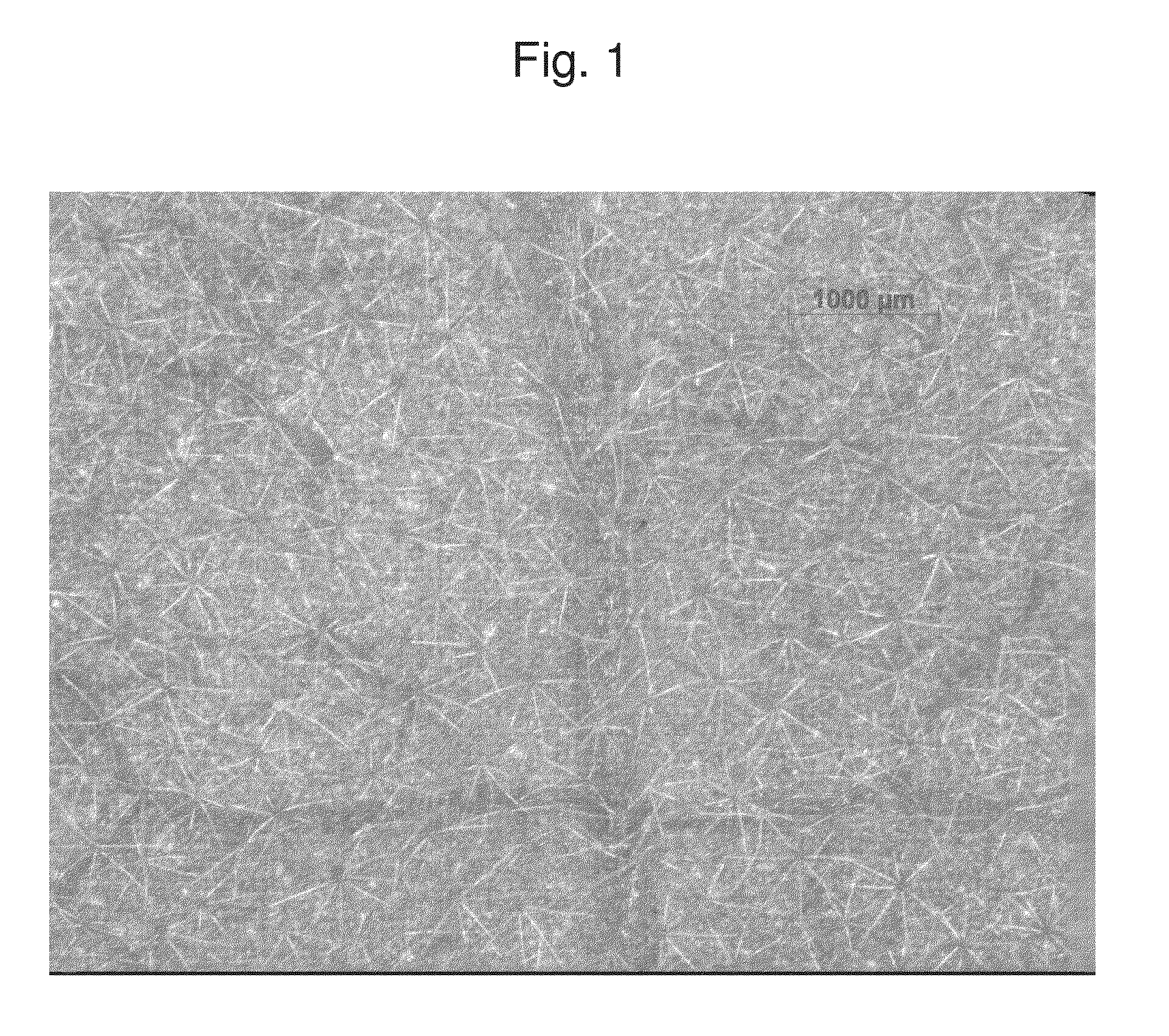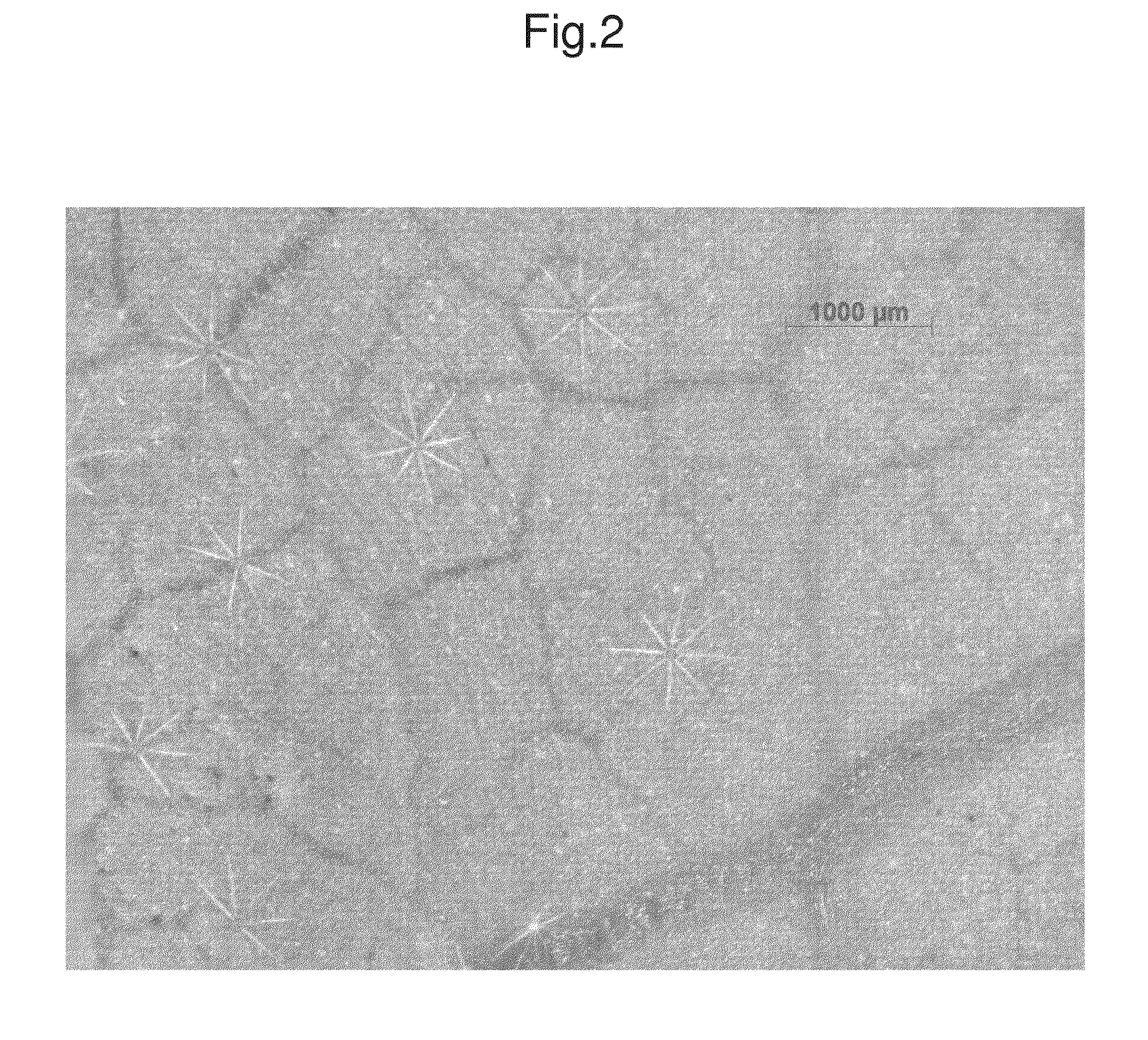Hairless eggplant
a technology for eggplants and eggplants, applied in the field of eggplants, can solve the problems of affecting the effectiveness of both predators and pest insects, affecting the intensity of damage caused, and requiring a lot of manual labor to grow eggplants, peppers and tomatoes
- Summary
- Abstract
- Description
- Claims
- Application Information
AI Technical Summary
Benefits of technology
Problems solved by technology
Method used
Image
Examples
example 1
Analysis of Hairless Eggplants
[0099]Seeds of the eggplant of the invention and control plants were sown in rockwool at 23° C. (about 16 hours light / 8 hours darkness). After germination the seedlings were transferred to rockwool cubes and were grown in the greenhouse at a temperature of 21° C. After seven weeks the plants were checked for trichomes, and the trichomes were counted. All trichome counts were made on a surface of one square centimeter.
[0100]All trichome counts were made on the same day, on both immature and mature leafs. The samples of the young leaf were taken on the first leaf from the top of the plant that measured 5 centimeter in length. The sample of the mature leaf was taken from the first stretched leaf seen from the top of the plant. In general this was the third leaf under the leaf that we defined as ‘young leaf”. For each genotype, five plants were sampled. For each mature leaf, two counts were made on the underside of the leaf blade and two counts were made on...
example 2
[0102]Evaluation of the Effect of a Reduced Number of Trichomes on Infestation with White Flies and their Natural Predator the Predatory Mite Amblyseius swirskii
[0103]In an experiment executed with two different eggplant genotypes, a control plant derived from variety “Thelma” having a normal number of trichomes on the vegetative plant parts and a plant of deposit NCIMB 41756, which may comprise the genetic determinant that leads to the reduced number of trichomes on vegetative plant parts (abbreviation NCIMB 41756), the effects of an infestation with whitefly (Bemisia tabaci) and whitefly in combination with its natural enemy the predatory mite (Amblyseius swirskii) were studied. The experiment was conducted in twelve insect-free gauze cages within a greenhouse. Four different treatments times three replicates were evaluated. The four treatments were: Plants from “Thelma” with biological pest control, plants from “Thelma” without biological pest control, plants from deposit NCIMB ...
example 3
[0106]Transfer of the Trait of the Invention to other Eggplants
[0107]The eggplants which may comprise the genetic determinant for the trait a reduced number of trichomes on vegetative plant parts as found in representative seed as deposited under accession number NCIMB 41756 (called herein the donor) were used to transfer the trait of a reduced number of trichomes on vegetative plant parts by crossing to the parents (mother and father) of cultivated eggplant called “Thelma”, in order to make a plant resembling Thelma, but with the trait of a reduced number of trichomes on vegetative plant parts.
[0108]After obtaining the F1 seeds, they were sown and the plants grown from the F1 seeds were selfed. The plants of the subsequent F2 populations were visually screened for the phenotype of a reduced number of trichomes on vegetative plant parts. The plantlets expressing the trait of a reduced number of trichomes on vegetative plant parts were selected. These selected plants were crossed aga...
PUM
 Login to View More
Login to View More Abstract
Description
Claims
Application Information
 Login to View More
Login to View More - R&D
- Intellectual Property
- Life Sciences
- Materials
- Tech Scout
- Unparalleled Data Quality
- Higher Quality Content
- 60% Fewer Hallucinations
Browse by: Latest US Patents, China's latest patents, Technical Efficacy Thesaurus, Application Domain, Technology Topic, Popular Technical Reports.
© 2025 PatSnap. All rights reserved.Legal|Privacy policy|Modern Slavery Act Transparency Statement|Sitemap|About US| Contact US: help@patsnap.com


